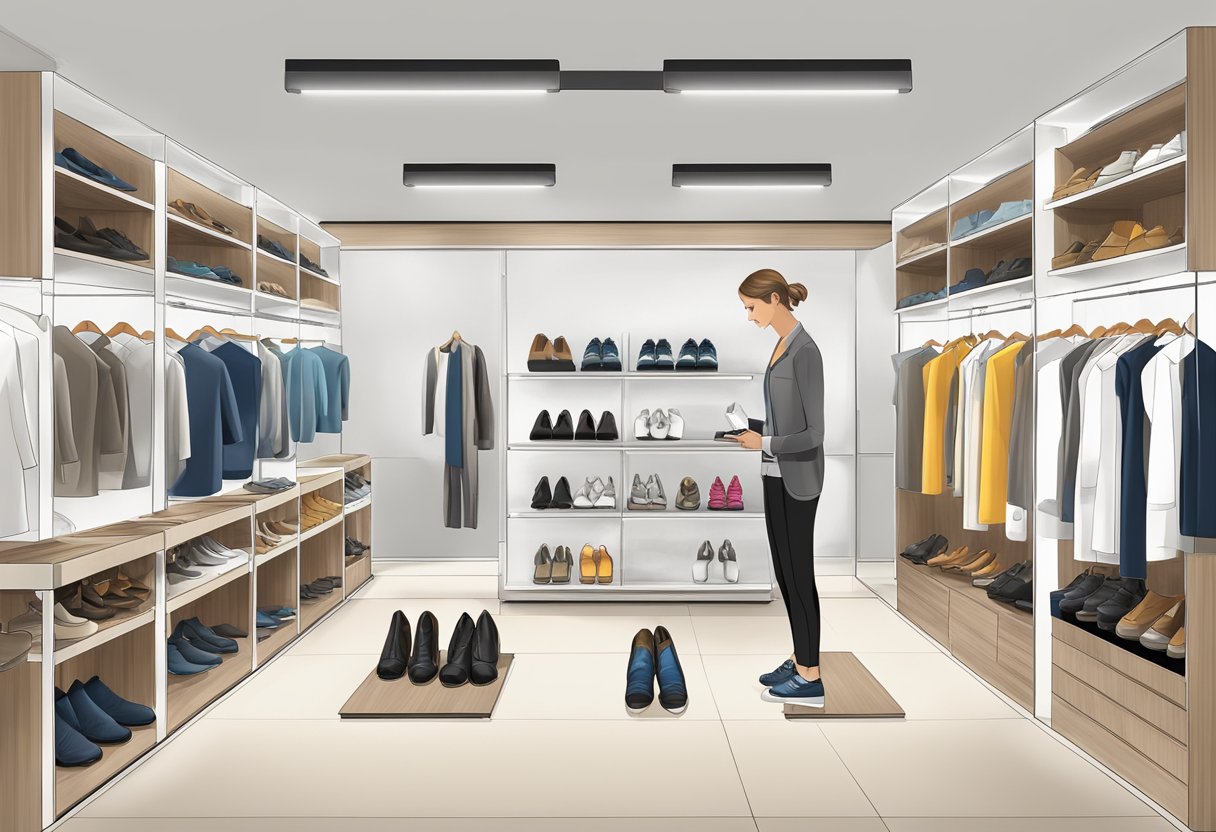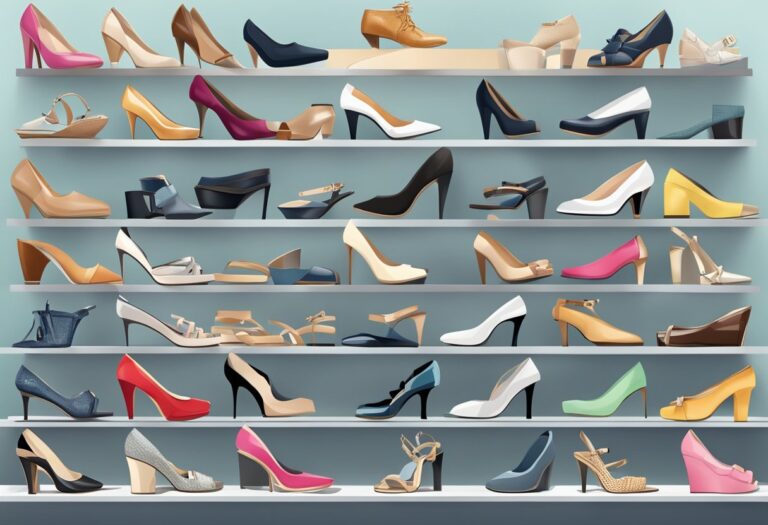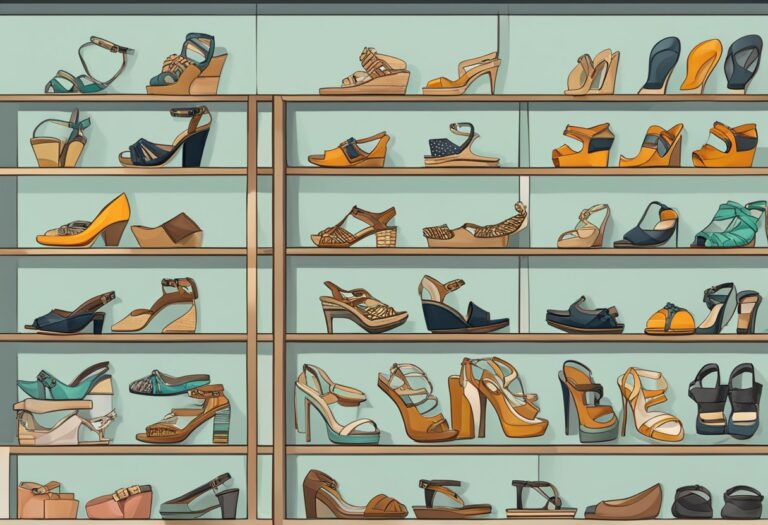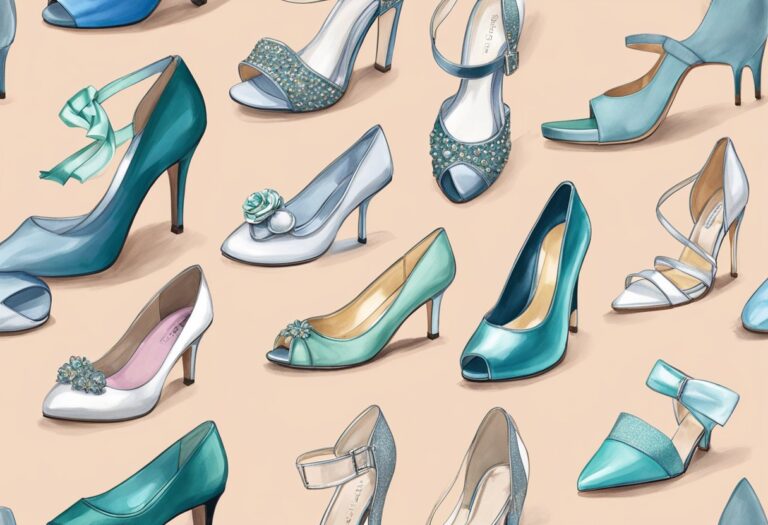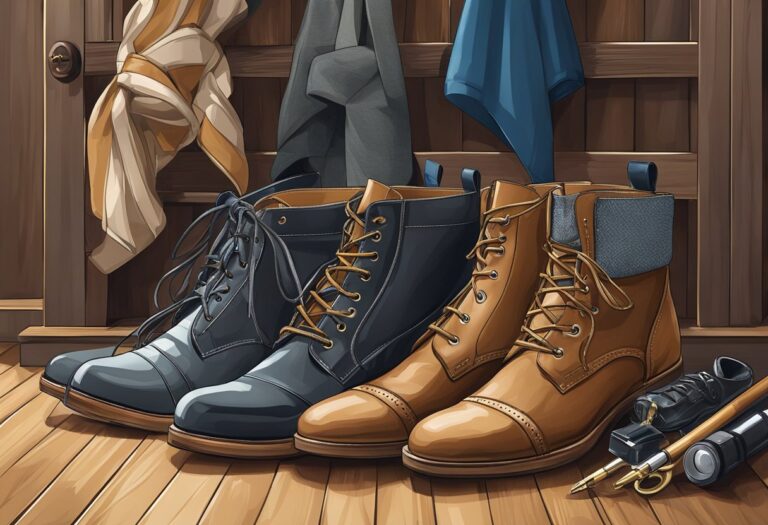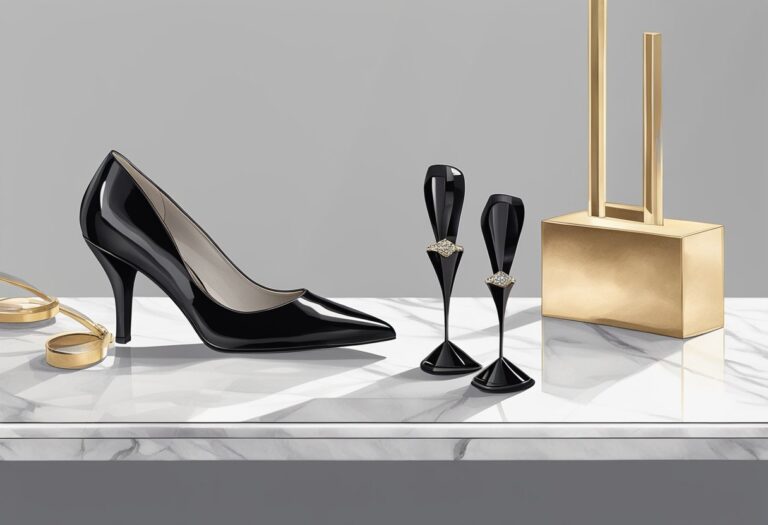Why Proper Shoe Fit Is Essential for Foot Health: The Importance of Choosing the Right Size and Style
Why Proper Shoe Fit Is Essential for Foot Health: The Importance of Choosing the Right Size and Style
Proper shoe fit is essential for foot health. Wearing shoes that are too tight or too loose can lead to foot problems such as blisters, calluses, and corns. In addition, poorly fitting shoes can cause more serious foot conditions such as plantar fasciitis, metatarsalgia, and even stress fractures.

When it comes to choosing the right shoes, there are several factors to consider. The size of the shoe is obviously important, but so is the shape of the shoe, the type of material it is made from, and the support it provides. A good shoe should fit snugly but not be too tight, and it should provide adequate support for the foot.
Many people make the mistake of choosing shoes based on style or fashion rather than fit and comfort. This can lead to foot problems down the line, which can be both painful and costly to treat. By prioritizing proper shoe fit and choosing shoes that support the foot, individuals can maintain foot health and prevent future foot problems.
Importance of Shoe Fit for Overall Foot Health

Prevention of Foot Disorders
Proper shoe fit is essential for preventing foot disorders. Shoes that are too tight or too loose can cause a variety of foot problems such as blisters, corns, calluses, and ingrown toenails. Shoes that are too narrow can cause bunions and hammertoes, while shoes that are too wide can cause instability and sprains.
A well-fitted shoe can also prevent the development of more serious foot conditions such as plantar fasciitis, which is a painful inflammation of the plantar fascia, a thick band of tissue that runs along the bottom of the foot from the heel to the toes. Proper shoe fit can also help prevent stress fractures, which are small cracks in the bones of the foot that can be caused by overuse or repetitive stress.
Enhancement of Foot Function
In addition to preventing foot disorders, proper shoe fit can enhance foot function. Shoes that fit properly can improve balance and stability, which can reduce the risk of falls and injuries. They can also improve the alignment of the foot and ankle, which can reduce the risk of overpronation or supination.
A well-fitted shoe can also provide proper arch support, which can reduce the risk of flat feet or high arches. This can improve overall foot function and reduce the risk of foot fatigue and pain.
Overall, proper shoe fit is essential for maintaining good foot health. By preventing foot disorders and enhancing foot function, a well-fitted shoe can help keep your feet healthy and pain-free.
Understanding Shoe Sizing and Measurement

Foot Measurement Techniques
Properly measuring your feet is essential for finding the right shoe size. There are several techniques to measure your feet accurately. One of the most common methods is the Brannock Device, a foot measuring tool found in most shoe stores. The device measures the length, width, and arch length of your foot. Another technique is to trace your foot on a piece of paper and measure the length and width with a ruler. It is important to measure both feet as they may not be the same size.
Interpreting Shoe Size Charts
Shoe size charts vary by brand and country, so it is important to refer to the specific chart for the brand and country you are purchasing from. Shoe sizes are typically measured in length and width. The length is measured in inches or centimeters, while the width is measured in letters, ranging from narrow (AA) to extra wide (EEEE). It is important to note that shoe sizes may also vary depending on the style of the shoe, such as boots or sandals.
When trying on shoes, it is recommended to wear socks or hosiery that you would typically wear with the shoes. It is also important to walk around in the shoes to ensure they fit properly and do not cause discomfort or pain. Remember, a properly fitting shoe should have enough room for your toes to move and be snug around the heel without slipping.
By understanding shoe sizing and measurement techniques, you can ensure that you find the right shoe size for your feet, which can help prevent foot pain and discomfort.
Key Features of a Properly Fitted Shoe

Toe Box Space
The toe box is the area at the front of the shoe where the toes sit. A properly fitted shoe should have enough space in the toe box to allow the toes to move freely without being cramped or squished together. This prevents blisters, calluses, and other foot problems that can arise from the toes rubbing against each other or the sides of the shoe.
Heel Counter Fit
The heel counter is the back part of the shoe that wraps around the heel. It should fit snugly but not be too tight or too loose. If the heel counter is too loose, the foot can slide around inside the shoe, causing blisters and other foot problems. If it’s too tight, it can cause discomfort and even lead to heel pain or plantar fasciitis.
Midsole Support
The midsole is the layer of material between the insole and the outsole of the shoe. It provides cushioning and support for the foot. A properly fitted shoe should have adequate midsole support to help absorb shock and reduce the risk of foot injuries. Shoes with worn-out or inadequate midsoles can cause foot pain, shin splints, and other problems.
In summary, a properly fitted shoe should have enough space in the toe box, a snug but not too tight heel counter, and adequate midsole support. These key features can help prevent foot problems and injuries and keep your feet healthy and comfortable.
Common Footwear Fitting Mistakes and Their Impact

Choosing Style Over Comfort
One of the most common mistakes people make when selecting footwear is choosing style over comfort. While it is understandable to want to look fashionable, it is important to prioritize comfort and fit to avoid foot problems. Shoes that are too tight, too loose, or have an uncomfortable shape can lead to blisters, calluses, and even more serious conditions such as plantar fasciitis.
Ignoring Foot Width
Another common mistake is ignoring foot width when selecting shoes. Not all feet are the same size or shape, and ignoring this can lead to discomfort and pain. Shoes that are too narrow can cause bunions, while shoes that are too wide can cause the foot to slide around, leading to blisters and other issues. It is important to measure foot width and select shoes that fit properly to avoid these problems.
Neglecting Arch Support
Many people neglect to consider arch support when selecting shoes, which can lead to a variety of foot problems. Shoes that lack proper arch support can cause flat feet, plantar fasciitis, and other conditions. It is important to select shoes with adequate arch support to maintain proper foot health.
Overall, it is important to prioritize comfort and fit when selecting footwear to avoid foot problems. By avoiding the common mistakes of choosing style over comfort, ignoring foot width, and neglecting arch support, individuals can maintain healthy feet and avoid painful conditions.
Professional Footwear Fitting and Personalized Solutions

Role of Orthopedic Specialists
When it comes to proper shoe fit, orthopedic specialists play a crucial role in ensuring that individuals receive the right recommendations and solutions for their unique foot needs. These specialists have the knowledge and expertise to assess foot conditions and provide personalized solutions that can alleviate pain and discomfort.
Orthopedic specialists take into account factors such as foot structure, arch height, and gait patterns when recommending proper footwear. They may also suggest custom orthotics or insoles to correct any foot abnormalities and provide additional support.
Custom Orthotics and Insoles
Custom orthotics and insoles can be a game-changer for individuals who require extra support or have specific foot conditions such as flat feet, high arches, or plantar fasciitis. These personalized solutions are designed to provide cushioning, shock absorption, and stability where needed.
Orthotics and insoles can be made from a variety of materials such as foam, gel, or cork, and can be customized to fit into any type of shoe. They can also be adjusted over time to accommodate changes in foot structure or to address any new foot concerns that may arise.
In summary, seeking the advice of an orthopedic specialist and investing in custom orthotics or insoles can greatly improve foot health and alleviate pain and discomfort. Proper footwear fit is essential for overall foot health, and personalized solutions can make all the difference in ensuring that individuals can lead an active and pain-free lifestyle.

